|
Centrip Editorial Board
Nagoya Science Museum: Hands-on Discovery

If the first word that comes to mind is boredom when you think of a science museum then check this out!
目錄>
About Nagoya Science Museum

The Nagoya Science Museum (名古屋市科学館/Nagoya Kagakukan) is located in Shirakawa Park (白川公園/Shirakawa Kouen) in the Central District (中区/Nakaku) of Nagoya City. The building's most striking feature is the Science Museum's Planetarium. It was Guinness-certified as the world's largest planetarium in December, 2011. The Nagoya Science Museum is also the largest hands-on science museum in Japan. It is dedicated to making every visitor have an enjoyable interactive experience with science.
Today, let me take you on a journey through the Science Museum!
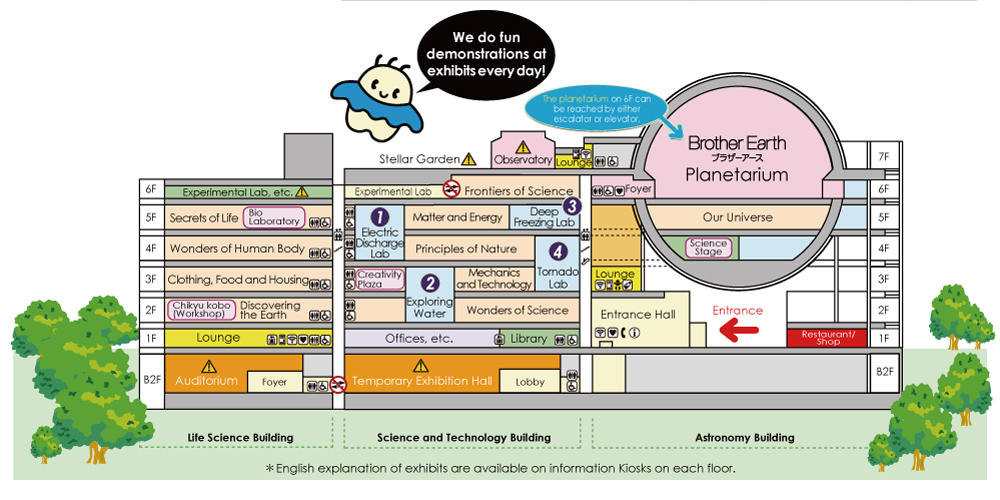
The Science Museum is divided into three main buildings, the Life Science Building, the Science and Technology Building, and the Planetarium. You can see the floor maps of each museum in the picture above.
Life Science Building: From cells to the earth
The Life Science Building starts from the 2nd floor, from the macroscopic form of the earth to the environment and the life around us, to the basic components of life—cells and organs, so that everyone can understand through visuals, listening, touching or experiments. Experience interesting life sciences and the mysteries of Earth.
The Discovering the Earth floor has fossils that can be touched and a magnifying glass that can be used to observe bugs trapped in amber. The two giant dinosaur skeletons in the center of the area will make you feel like you stepped into Jurassic Park. There is also an Earth Workshop for visitors to get hands-on experience and is very popular among children.
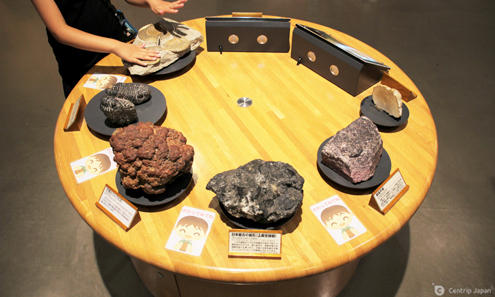 You can touch the fossils!
You can touch the fossils!Watch out! The brown-red stone is dino poop!
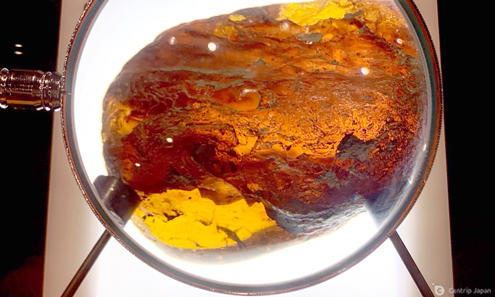 Check out the bug in the amber!
Check out the bug in the amber!Look close! It's trying to get out.
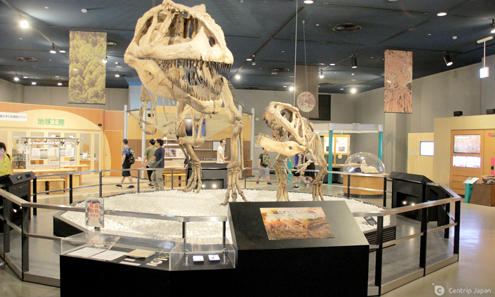 Feel the power of these ancient creatures.
Feel the power of these ancient creatures.
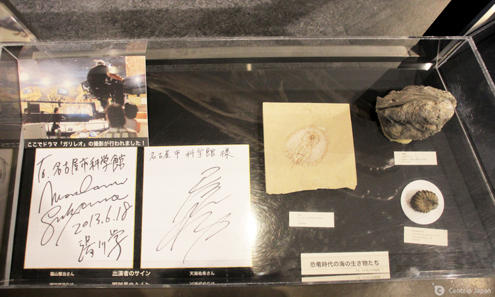 The Japanese drama Detective Galileo 2 was filmed here.
The Japanese drama Detective Galileo 2 was filmed here. Check out the signatures of Fukuyama Masaharu and Tatsumi Yuki!
The 3rd floor of the Life Sciences Building has the theme of Food, Clothing, and Housing. The bathroom, the living room and the fixtures within are all dissected, revealing their inner workings. Visitors can also experience the conditions of life for people from the northern and southern hemispheres and their different climates by walking into high and low-temperature rooms.
 This house is dissected for close-up examination
This house is dissected for close-up examination
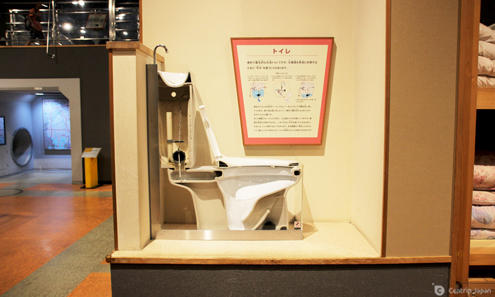 The toilet is cut in half don't use it! lol
The toilet is cut in half don't use it! lol
 A sink and bathroom
A sink and bathroom
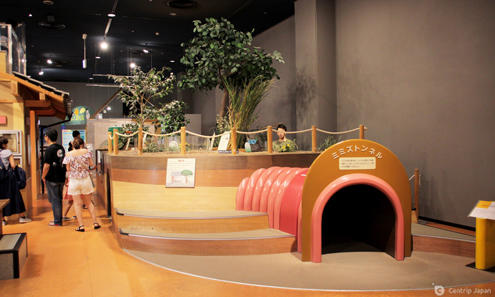 Crawl through the earthworm tunnel!
Crawl through the earthworm tunnel!
The 4th and 5th-floor themes are The Wonders of the Human Body and Secrets of Life. Both floors have hands-on facilities for you to experience. At Wonders of the Human Body, there are a variety of game facilities, you can try a game of reaction speed, or experience for yourself the relationship between various organs of the human body.
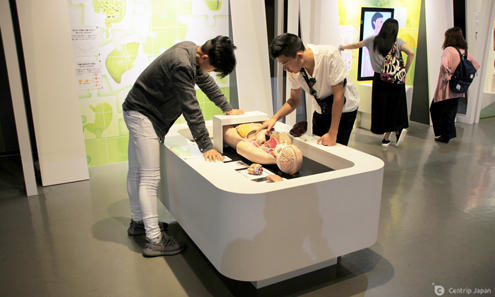 Organs in the human body
Organs in the human bodyThese two can't figure it out!
 Let's see how the bones are connected!
Let's see how the bones are connected!
Science and Technology Building: Zero Distance Experience Science and Technology
As the name suggests, the Science and Technology Building houses exhibits on basic science and engineering. There is a lot of cool stuff here! In addition to teaching basic knowledge and principles of science and engineering, the Science and Technology Building has three scientific laboratories: the Electric Discharge Lab, Deep Freezing Lab, and Tornado Lab. The displays in of basic science principles use experimentation to show the scientific principles, giving people a chance to use their hands and brains to experience science through fun.
 Periodic table of elements, each element has a physical object
Periodic table of elements, each element has a physical object
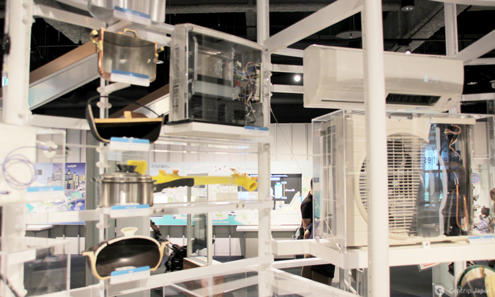 Material Science Exhibition Area
Material Science Exhibition AreaAn air conditioner is laid bare for you to inspect.
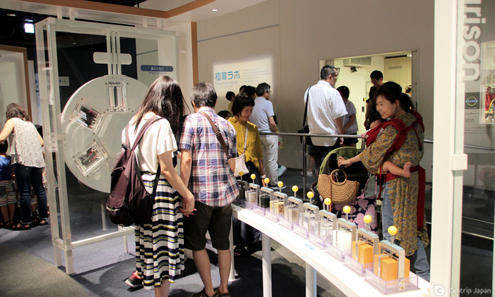 Concept of Density Area
Concept of Density AreaThese are the same volume but have different weight.
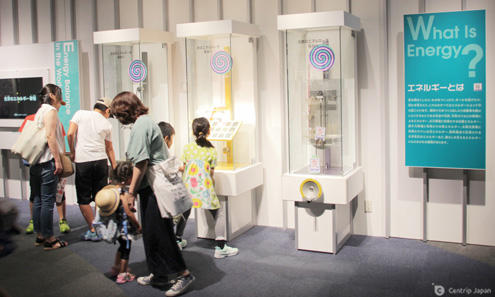 What is energy?
What is energy?
 The secret of sound transmission
The secret of sound transmissionA whisper can be passed from device to device.
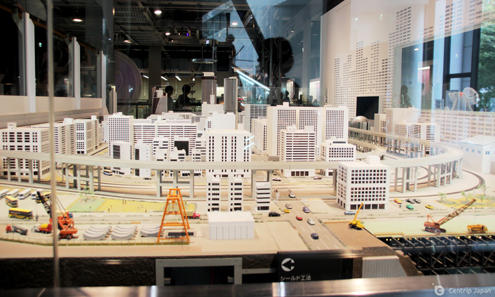 City model
City modelYou can even see the subway system
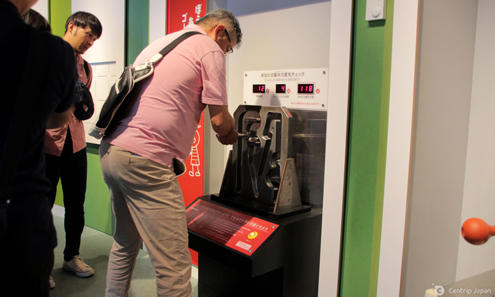 Let's compare our ability to concentrate
Let's compare our ability to concentrate
 Experience physics through experiment
Experience physics through experiment
Tornado Lab simulates the formation of tornadoes using fans and water vapor. The test machine is set on the 3rd floor, and from the 4th-floor staircase, you can observe the whole process.
The Electric Discharge Lab uses a lead coil to generate current, and the roaring sound of the intense electric discharge will give you an unforgettable experience. On Holidays (Japanese public holidays and weekends) If you want to experience the Electric Discharge Lab, you'll need to reserve a ticket in advance.
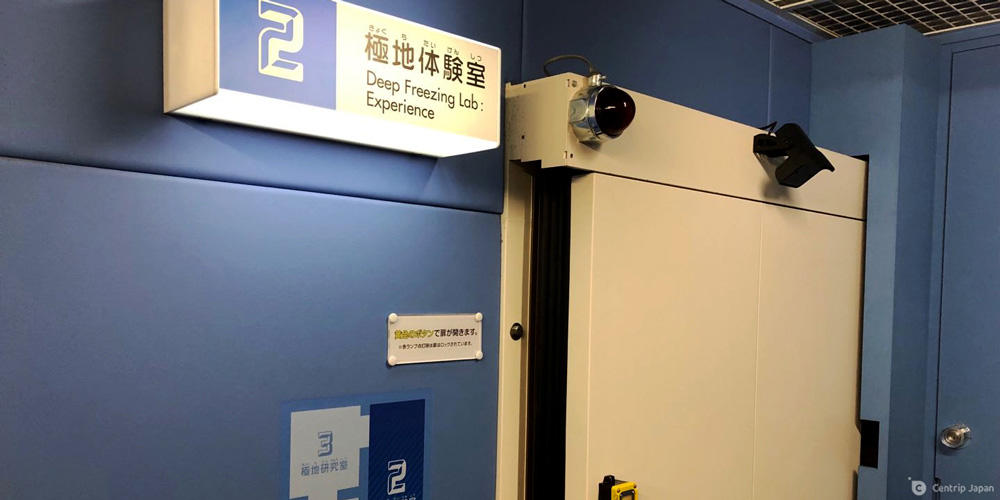 Deep Freezing Lab
Deep Freezing Lab
Push the button and chill out!
The most popular experience facility in the Science and Technology Building is the Deep Freezing Lab, located on the 5th floor. Before entering this lab, wrap yourself in winter clothes before walking into a freezing -30ºC climate, like the frozen wastes of Canada. Projected on the top of the lab is an immersive display of the northern lights (aurora borealis).
All the Japanese people around me were shivering, but I was born in the north so it wasn't such a big deal. lol
Since many people come to experience the Deep Freezing Lab, you"ll need to get a ticket in advance, and if it is on a holiday, you must queue for admission.
Planetarium: not just a planetarium
The Planetarium, Brother Earth, is located in the huge sphere-shaped area and is the biggest attraction of the Nagoya Science Museum, but there is more here than meets the eye!

On the Science Stage, there are live performances by staff and also Our Universe where you can see a variety of satellites, aircraft, planetarium models and prototypes. A must-see for space and engineering fans.
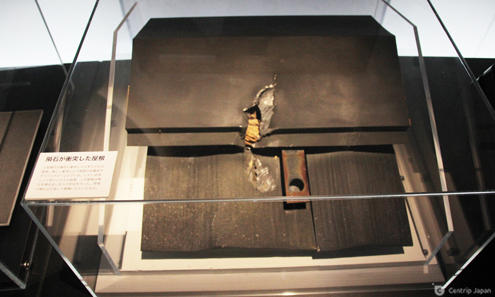 A roof hit by meteors
A roof hit by meteors
 The Komaki meteorite
The Komaki meteorite(小牧隕石/Komaki Inseki)
This area exhibits the 2018 Komaki Meteorite Event. The piece of the meteorite that broke off and smashed through a residential home in Komaki, Aichi, is also being exhibited here.
 Orbit of the Earth and Moon.
Orbit of the Earth and Moon.Watching the two planetary bodies in orbit, we can realize how small we are.
 History of Planetariums
History of Planetariums
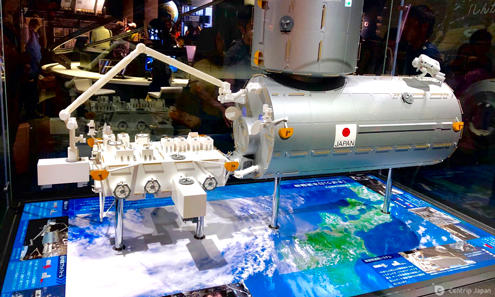 International Space Station Model
International Space Station Model
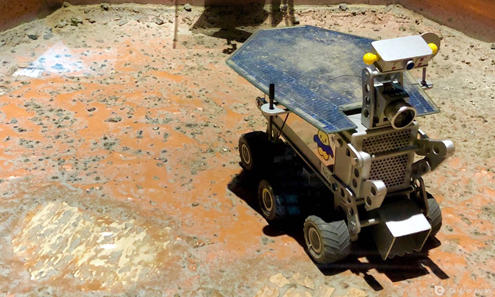 A planetary rover
A planetary rover
The Planetarium's theater is its biggest attraction. Two types of shows are held at the Planetarium, general show and night show. The general show occurs during regular operating times. Adults and children can participate, the theme is changed every month, and the stary night skies are explained. Night shows are held irregularly on special occasions and are only for adults. For example, at Christmas time there is a Christmas Night show.
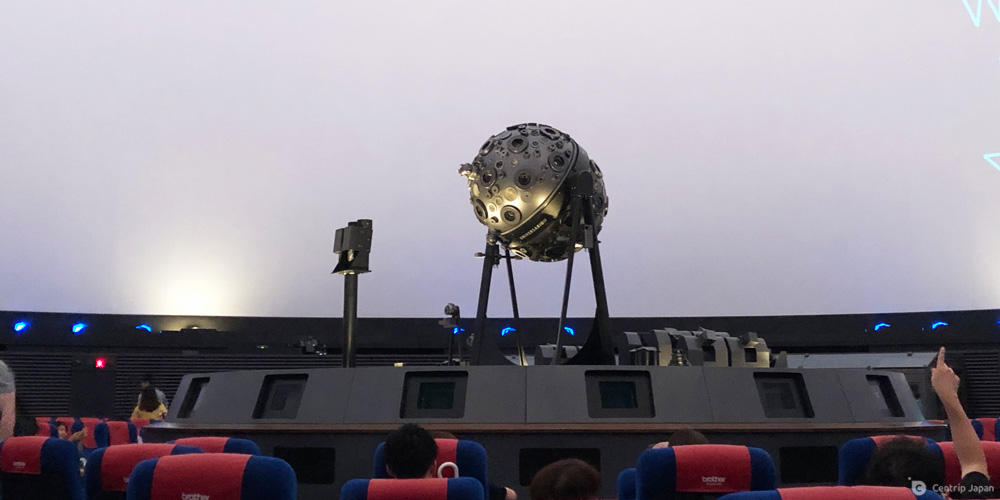
To avoid disturbances for guests, once the show starts, guests are asked to refrain from taking pictures or making loud sounds. If you continue to make loud noises or you are using your mobile phone is bright, you will be asked to leave. During the show, there the staff reads explanations of the phenomenon is shown. The shows are presented only in Japanese but you can enjoy the amazing night scenery projected before our very eyes.
A souvenir shop: SO-NANDA
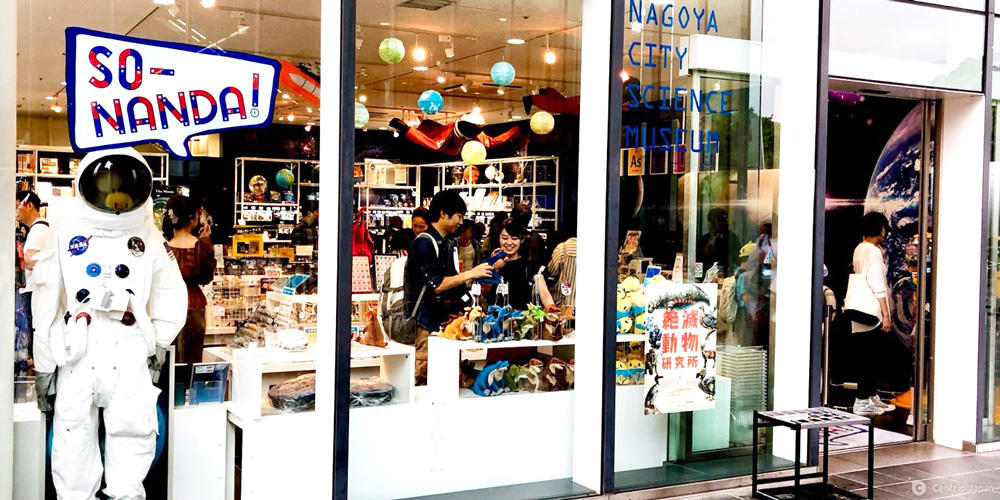
When you arrive at the Science Museum don't forget to check out the museum shop!
The name of the souvenir shop is called SO-NANDA (そうなんだ - I see). It's regularly used phrase in Japanese, used to convey clarity and understanding when answer questions. It's a cute name for the store. The types of goods are generally related to the themes of the permanent and special exhibitions, and there are often interesting little things to be found.
 Banana slices with potassium, so the box is decorated with potassium (the symbol K for Kalium on the periodic table of elements)
Banana slices with potassium, so the box is decorated with potassium (the symbol K for Kalium on the periodic table of elements)Calcium-rich milk biscuits are marked with Ca!
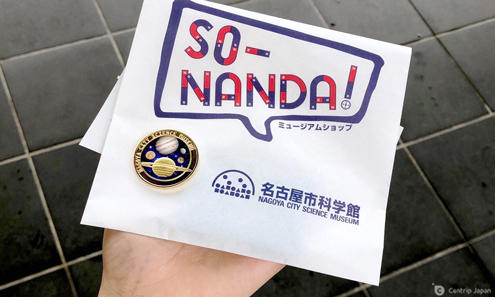 I bought a commemorative coin from the store!
I bought a commemorative coin from the store!
Click Spot Info below for information regarding business hours, directions, and ticket prices.
The Science Museum is surrounded by many attractions!
Unlike some science museums or exhibition halls, the area around Nagoya Science Museum is quiet and relaxed. Shirakawa Park and Nagoya Art Museum (名古屋美術館/Nagoya Bijiutsukan), are adjacent to the Science Museum, and worth a visit. Additional science museums, with interesting exhibits, are nearby too. The Electricity Museum (でんき科学館/Denki Kagakukan) and the Matsuzakaya Art Gallery (松坂屋美術館/Matsuzakaya Bijutsukan). The Science Museum is also close to Nagoya’s shopping destinations Sakae, Yabacho and Osu Shopping Street. From the Science Museum, you can go reach these areas and get a bite-to-eat hit-up the big shopping malls.
Nagoya City Art Museum
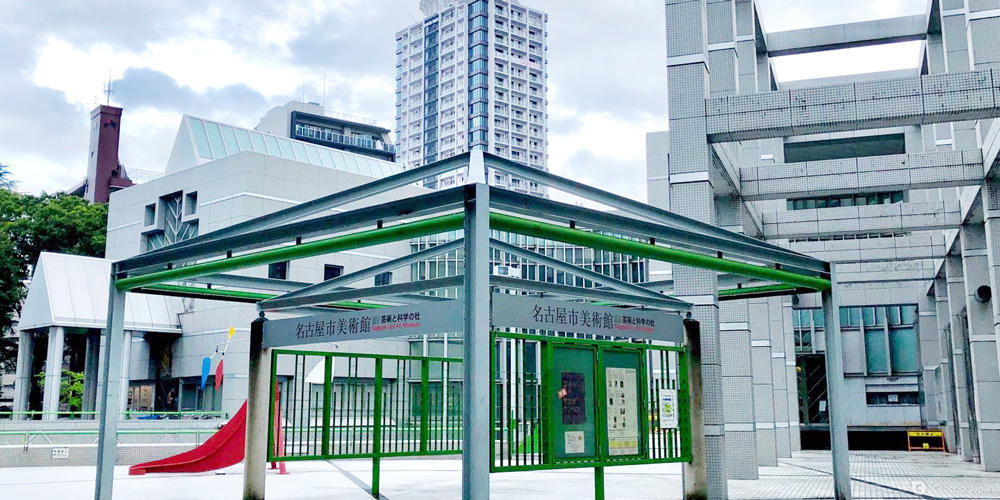
The Nagoya City Art Museum is located next to the Science Museum and is also one of the architectural works of Japanese architect Kurokawa Kisho (黒川紀章) in Shirakawa Park. The permanent exhibition features Parisian paintings, Mexican mural movements and modern artworks, as well as local Nagoyan art.
Electricity Museum

Electricity Museum is about a five-minute walk from Shirakawa Park and is a corporate-run museum operated by Chubu Electric Power (中部電力/Chubu Denryoku). There are many wonderful electricity-related exhibits in the museum, and you can learn all about electricity.
Sakae District

Sakae is one of the most lively areas in Nagoya and is home to many large clothing and department stores, restaurants, and Nagoya's unique underground streets. If you're finished with the science museum, and the other museums have closed check Sakae out in the evening. It is a great place to start your shopping trip!
Wrap-up
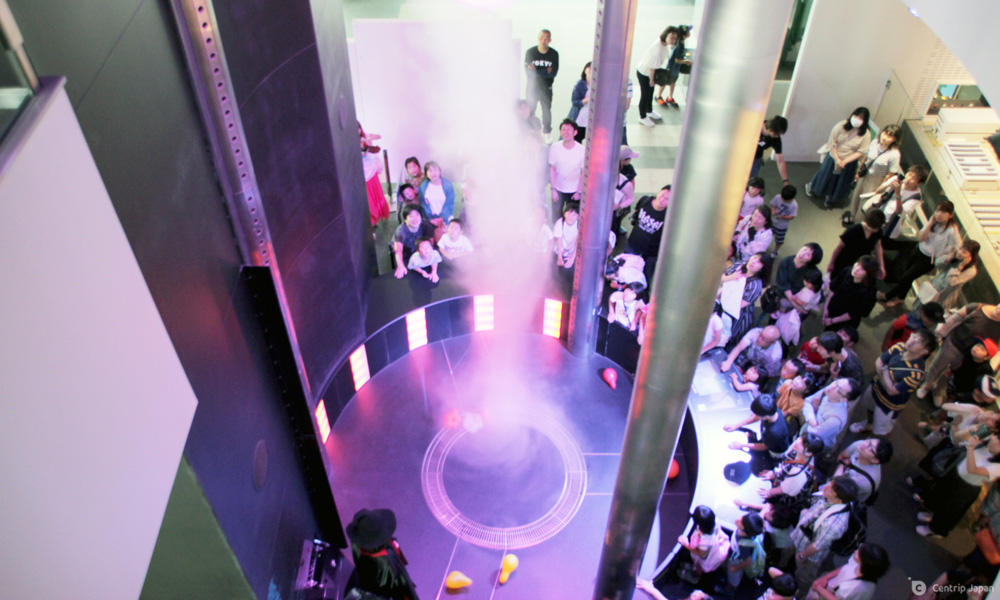
The Nagoya Science Museum follows the concept of teaching and learning as a venue for its exhibitions. No matter your age you can go to the Nagoya Science Museum and find something to enjoy!

